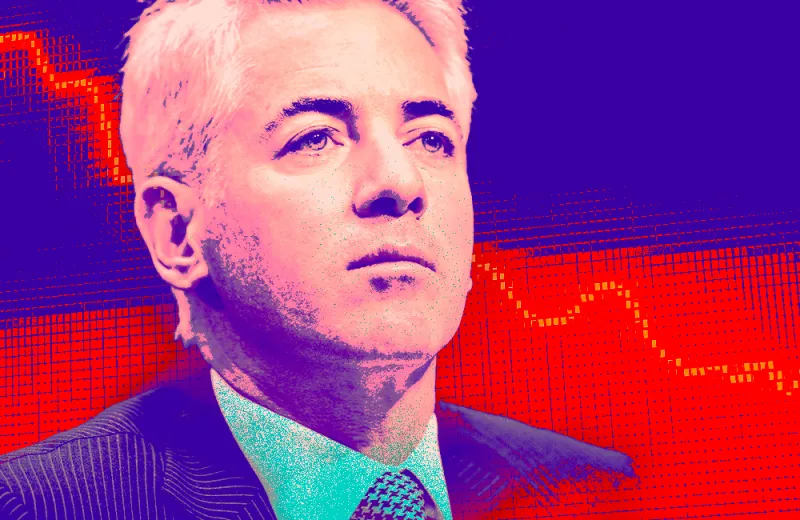Bill Ackman’s bet against U.S. government debt has dragged down his hedge fund this year.
The short of 30-year U.S. Treasuries, first undertaken in April of 2022, cost Pershing Square Holdings 4.1 percentage points during the first half of the year, according to a just-released semiannual report to investors. The bet was the biggest loss for the portfolio, whose gross gains were 10.9 percent for the six-month period. During that time Pershing Square drastically underperformed the stock market, which gained 16.9 percent during the same time.
But now that Treasury rates have hit their highest yields since 2007, Ackman’s bet is starting to look better.
After Fitch Ratings downgraded U.S. debt on Aug. 1, long-term rates began to move higher, and Ackman’s short has benefited. By August 15, the trade was only losing 2.2 percentage points for the year, according to the new report.
That said, the short continued to be the worst performer in the portfolio during a year when stocks have been soaring. And Pershing Square is still underperforming slightly; it was up 14.8 percent on a gross basis through August 15, compared to a gain of about 16 percent for the S&P 500.
Ackman has argued that the option-like strategies he has employed in his short bets in recent years offer an asymmetrical risk-reward profile — meaning the gains can far exceed any potential losses. That strategy worked like a charm during Covid, when he made more than $2 billion in a few weeks. But as he noted in the latest report, “the passage of time has reduced the value of these option-like hedging strategies,” which he gave as one reason why he had been losing money on his short earlier this year.
In early August, the hedge fund manager took to X — the social media site formerly known as Twitter — to talk down U.S. debt, making some of the same arguments unveiled in Pershing Square’s latest report — deglobalization, higher defense costs, the energy transition, and the greater bargaining power of workers.
“We continue to hedge the risk of a rise in 30-year Treasury rates because we remain concerned about the risk of higher long-term interest rates on equity valuations,” he wrote in the report. “Inflation is showing encouraging signs of moderation, but it remains persistently high. While we have seen promising progress in shelter inflation as asking rents moderate and as goods inflation and supply chains normalize, inflation in non-shelter services — which represents nearly half of personal consumption expenditures — persists, as wages remain elevated.”
He argued that the resiliency of the labor market and economic growth call for higher rates. And he said that the pace of job growth is too high — “twice the level we would expect in a stabilized economic environment.”
Ackman had pushed the Federal Reserve to raise rates months before it actually did so, but as the higher rates began to pinch the stock market, he suggested that 3 percent inflation was something most companies could live with. Now he says that even 3 percent inflation will require higher interest rates.
On X, Ackman said his short bet on Treasuries was not just a hedge for his equities portfolio —but a standalone macro bet on higher rates.
Ackman’s social media commentary got a fair amount of pushback. “The time for this trade was two years ago,” wrote one widely followed user who posts under the pseudonym of Jesse Livermore, after the famous stock speculator who profited off the 1929 stock market crash. “The current payoff is far from asymmetric.”
Independent financial writer Christopher Robb also attacked Ackman’s thesis, saying that the short was “likely as wrong as it is risky.” In refuting Ackman, he argued that deglobalization doesn’t favor other states more than America, the energy transition is actually helping the economy, and that the concern over rising labor costs is overdone, because workers’ wages still haven’t kept up with inflation. “Ackman is just plain wrong here,” he said on X.
For the time being, however, long-term rates have moved in Ackman’s direction, and he’s sticking with his dour view of their future.
“We do not believe that current levels of long-term Treasury rates are high considered in a longer-term historical context,” he said in the Pershing Square report.
Ackman also thinks that if economic prospects continue to brighten “the demand for credit may increase substantially as businesses increase their borrowings to fund new investments. Greater demand for credit will also likely contribute to higher longer-term interest rates.”







